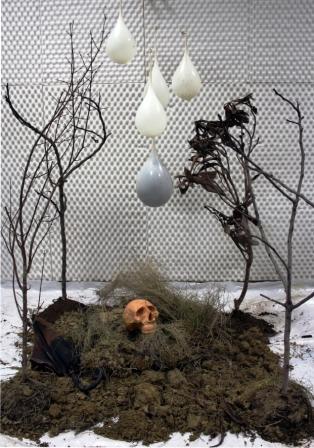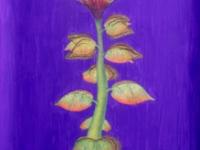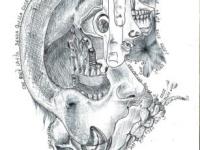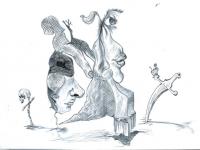TERRA SINE AQUA

TERRA SINE AQUA
L'opera vuole idealmente rappresentare una sorta di monumento funebre alla ormai degradata interazione tra uomo e natura, con particolare riferimento alla gestione e all'utilizzo delle acque. L'elemento centrale dell'opera è rappresentato da un teschio in terracotta, simbolo dell'umanità , adagiato su di una base realizzata con zolle di terra nuda, priva di piante verdi, a rappresentare il suolo terrestre reso ormai arido ed incapace di generare vita a causa dell'inquinamento delle falde acquifere e dell' acqua piovana. L'opera esprime in maniera forte e macabra l'impossibilità della vita senza acqua e allo stesso tempo funge da monito per l'uomo, poiché, inquinando le acque, egli si fa carnefice non solo dell' ambiente ma anche di se stesso, avviandosi verso un lento ed inarrestabile declino dal quale non potrà più difendersi; il teschio è infatti disposto con lo sguardo rivolto verso ovest ed al suo fianco è presente un ombrello richiuso ormai consunto ed inutilizzabile.
The work ideally means to represent such a tomb of the now degraded interaction between Man and Nature, with particular reference to the management and utilization of waters. The central element of the work is an earthen skull, emblem of mankind, laid on a base made of naked clods, void of green plants, representing the ground now made unable to produce life because of ground waters and rain water pollution. The work expresses in a strong and macabre way the impossibility of life without water and, at the same time, acts as warning towards man, because, polluting waters, he becomes executioner not only for the environment but also for himself, beginning a slow and unrelenting decline from which he won't be able to defend; the skull is indeed looking towards west and by its side there is a closed umbrella by now worn and unusable.









